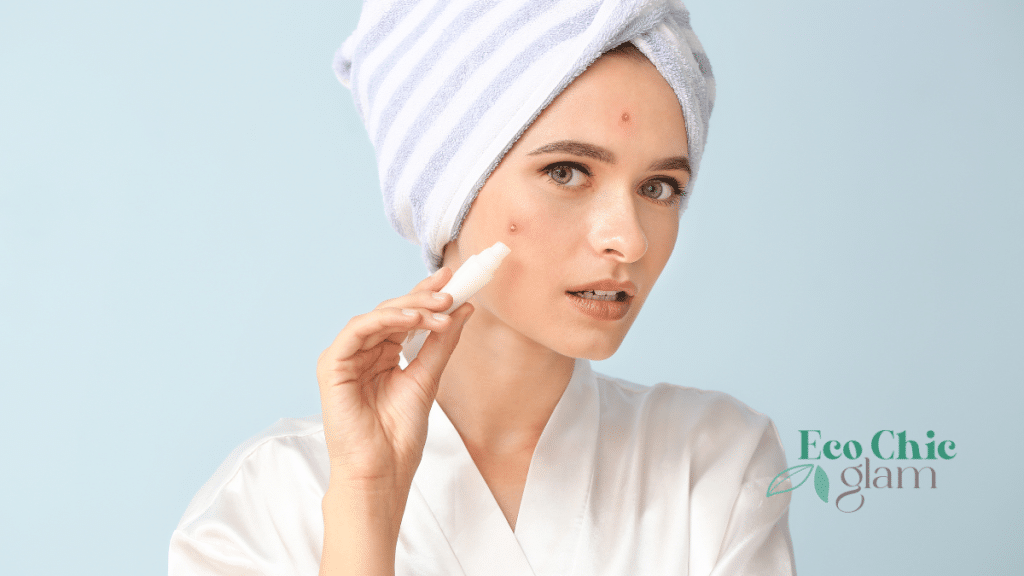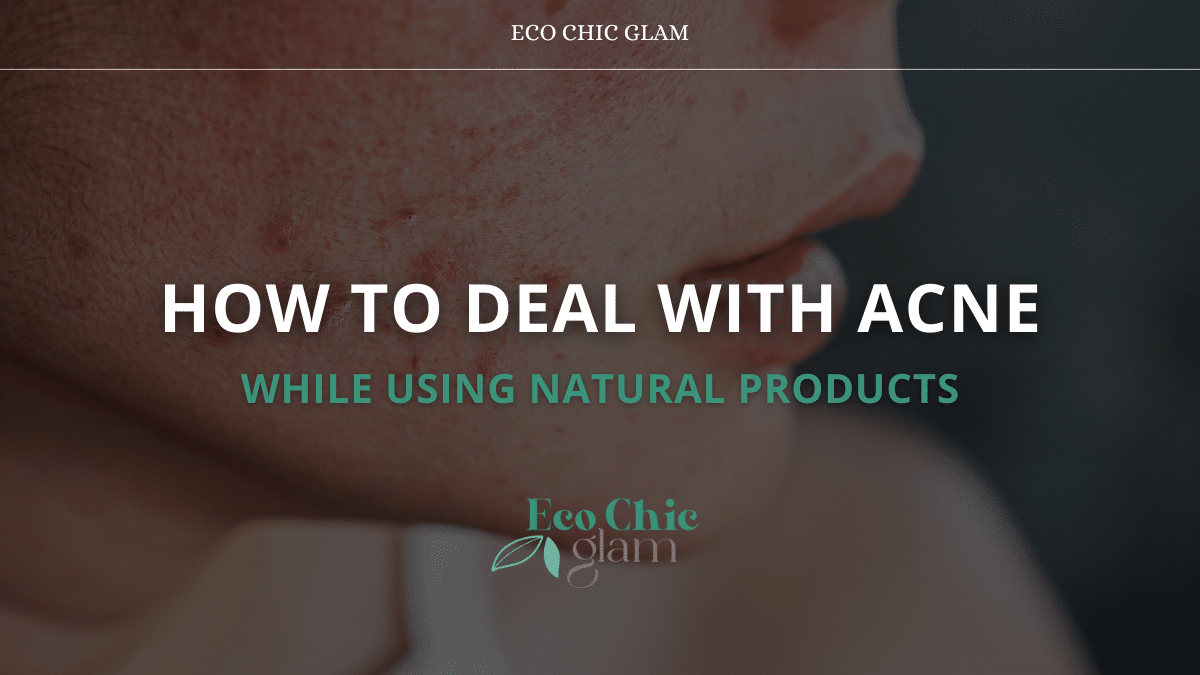You’ve made the switch to natural skincare.
Your shelf is full of botanical serums, tea tree toners, and clean moisturizers. But the breakouts? They’re still hanging on. Or worse—getting angrier.
If this sounds familiar, you’re not alone.
Acne doesn’t magically vanish just because you went natural—but there is a smarter way to treat it without harsh chemicals.
Here’s how to fight breakouts naturally, effectively, and safely—without giving up your clean beauty routine. 🌱

🧴 Why You Might Still Break Out with Natural Skincare
Natural doesn’t always mean acne-safe. In fact, many “green” ingredients can still clog pores or irritate your skin.
Common natural triggers include:
- Coconut oil (super comedogenic!)
- Essential oils (especially citrus, peppermint, or tea tree in high doses)
- Heavy butters like cocoa or shea (great for dry skin, not for acne-prone)
- DIY masks with lemon or baking soda (way too harsh)
And sometimes, your skin is just purging—adjusting to your new routine. But if it lasts more than 4–6 weeks, it’s time to reassess.
🌿 How to Treat Acne Naturally Without Damaging Your Skin
✅ 1. Choose Non-Comedogenic Oils
Yes, you can use oil—even if you’re acne-prone. The trick is using the right ones.
💚 Best options:
- Jojoba oil (mimics skin’s natural sebum)
- Hemp seed oil (balances oily skin + calms inflammation)
- Rosehip oil (fades acne scars + doesn’t clog pores)
🧼 2. Simplify Your Routine
Too many actives—even natural ones—can overload your skin.
Keep it simple:
- Gentle, sulfate-free cleanser
- A natural toner (like rose water or witch hazel without alcohol)
- Lightweight, non-clogging moisturizer
- Spot treatment (see next step!)
🎯 3. Use Targeted Natural Spot Treatments
Instead of drying your whole face, treat breakouts directly.
🌿 Try:
- Dab of raw honey (antibacterial + calming)
- Diluted tea tree oil (1 drop in 1 tsp carrier oil)
- Clay mask on problem areas 1–2x a week
Avoid putting lemon juice or apple cider vinegar directly on pimples—it’s too acidic and can damage your skin barrier.
🛌 4. Don’t Skip Moisturizer
Many acne-prone folks make this mistake.
Your skin still needs hydration. Skipping moisturizer makes it overcompensate by producing more oil. Look for something that’s:
- Lightweight
- Fragrance-free
- Labeled non-comedogenic
💧 5. Drink Water + Go Slow
Internal wellness = external glow.
Drink water, eat anti-inflammatory foods, and give your natural routine time to work. Acne healing is a marathon, not a sprint.
🙋♀️ FAQs
Q1: Is it normal to purge after switching to natural skincare?
Yes, especially if you’re using products with AHAs, BHAs, or clay. It usually lasts 2–4 weeks. If breakouts get worse or last longer, your skin might be reacting—not purging.
Q2: Can I still use salicylic acid or benzoyl peroxide?
If you’re okay with a “natural + science” combo, yes! These are effective acne treatments. Look for clean formulations that include them at low doses.
Q3: Are natural remedies strong enough for cystic acne?
Cystic acne may need medical help. Natural products can support your skin, but for deep, painful breakouts, see a dermatologist.
🌟 Final Thoughts: Clear Skin Can Be Natural—But Not One-Size-Fits-All
Natural skincare can absolutely help you manage acne—but only if you use the right ingredients for your skin.
Focus on balancing, calming, and consistency—not overdoing it with every trending oil or DIY mask.
✨ Follow us on social media for daily eco-beauty tips, acne-safe product picks, and real skin success stories
🌱 Visit EcoChicGlam.com for more about clean skincare, gentle routines, and sustainable makeup that won’t make you break out

